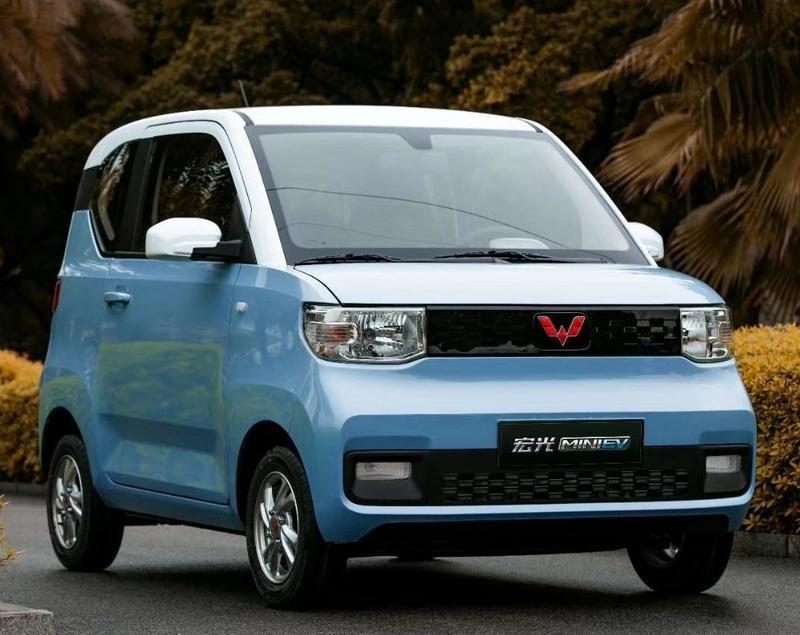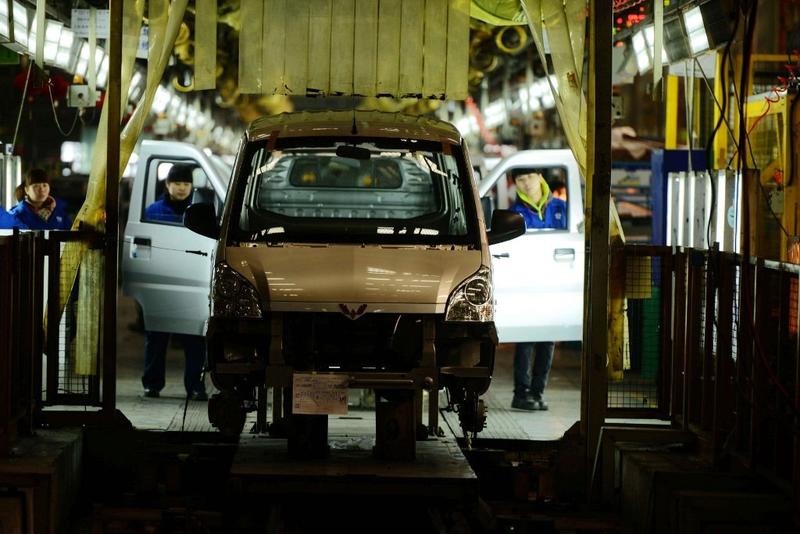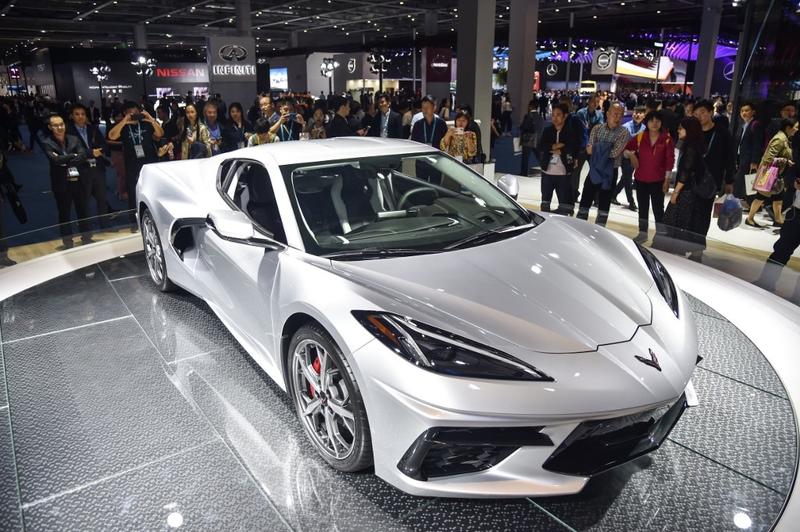 This undated photo taken from the official website of SGMW shows the Hongguang MINI EV model, which has become the most sold EV model in China.
This undated photo taken from the official website of SGMW shows the Hongguang MINI EV model, which has become the most sold EV model in China.
BEIJING - When 32-year-old photographer Jaco Xu needed a run-around car for work in the eastern city of Hangzhou, the price tag on the latest micro EV from GM's China joint venture overcame his qualms about electric vehicles.
Bidding to reverse a sales decline due to a slower economy and stiff competition, GM expects electric vehicles, or EVs to make up more than 40 percent of its new launches in China over the next five years
Xu paid 38,800 yuan (US$5,735) for his tiny two-door Wuling Hong Guang MINI EV, while the basic model retails for just 28,800 yuan (US$4,200), making it China’s cheapest EV.
“It feels pretty good. The price is so low and the appearance is simple and beautiful,” said Xu. “Why would I hesitate at that price?”
Launched in July, the Wuling MINI is heading a trend towards a new segment of EVs in China following changes to government subsidies - smaller vehicles with less range between charges, but a super-cheap price tag.
Despite basic features - no safety air bags, optional air-conditioning and a driving range of less than 200 km due to a smaller battery - buyers have been enthusiastic.
SGMW, GM's venture with partners SAIC Motor Corp and Guangxi Automobile Group, sold about 15,000 of the vehicles in August, making it China's top-selling EV for the month, surpassing Tesla's TSLA.O popular Model 3.
READ MORE: GM venture's mini car becomes China's most sold EV
 In this Jan 9, 2014 file photo, employees work in the Qingdao branch of SAIC-GM-Wuling Automobile in Qingdao, east China's Shandong province. (CHINA OUT AFP PHOTO)
In this Jan 9, 2014 file photo, employees work in the Qingdao branch of SAIC-GM-Wuling Automobile in Qingdao, east China's Shandong province. (CHINA OUT AFP PHOTO)
The venture plans to expand manufacturing capabilities of the new model, turning out cars at its plant in Liuzhou as well as its existing facilities in Qingdao, said Zhou Xing, SGMW’s branding and marketing director.
“We positioned this model as a ‘people’s commuting tool’,” he said, speaking ahead of the Beijing auto show which starts on Saturday. “Customers can drive their cars to work every day.”
The target market includes people like Xu who are looking for a city-run around as a second car, rural buyers who want a vehicle to move goods and young first-time buyers who are motivated by price.
New segment
Total sales of new energy vehicles -- including electric, plug-in hybrid and hydrogen fuel-cell vehicles -- are expected to reach 1.1 million vehicles in China this year, about 5 percent of total auto sales.
The micro car represents a shift in what typifies a mainstream electric vehicle, as policymakers push for increased EV production and sales have been bolstered by restrictions on petrol-fuelled cars.
In response to government requirements to win generous EV subsidies, automakers over the past decade have developed higher energy-density battery systems to allow cars to drive for longer with a single charge.
 This Nov 22, 2019 file photo shows a made-in-China Tesla Model 3 at a Tesla experience center in east China's Shanghai. (DING TING / XINHUA)
This Nov 22, 2019 file photo shows a made-in-China Tesla Model 3 at a Tesla experience center in east China's Shanghai. (DING TING / XINHUA)
Tesla’s Model 3, which has a range of over 400 km, has been the market leader in China for most of 2020, retailing for about US$43,000, about 10 times the cost of the Wuling MINI.
However, China cut subsidies heavily in 2019 and is now asking for higher EV power efficiency to save energy. Automakers, in turn, are planning more smaller EVs with a moderate driving range aimed at customers who can charge cars easily, industry executives said.
ALSO READ: Nation plans to expand charging infrastructure for new energy vehicles
The economics are skinny. Wuling MINI will not get EV subsidies due to its short range. For SGMW, the cheap price tag means it makes very little money at best, according to insiders familiar with the matter.
EVs, however, generate green credits for SGMW that can be used to offset negative credits of other companies like SGM, its sister venture which is expanding a lineup of bigger SUVs under Buick, Chevrolet and Cadillac marques.
“Selling micro EVs in China makes more sense this year,” said a product planning official at a GM rival.
“Subsidies have become a less important factor of pricing as government has already cut a lot, while green credits are expected to become more expensive,” the official said.
 In this Nov 6, 2019 file photo, people visit a General Motors stand during the second China International Import Expo in Shanghai. (HECTOR RETAMAL / AFP)
In this Nov 6, 2019 file photo, people visit a General Motors stand during the second China International Import Expo in Shanghai. (HECTOR RETAMAL / AFP)
Micro focus
Bidding to reverse a sales decline due to a slower economy and stiff competition, GM expects EVs to make up more than 40 percent of its new launches in China over the next five years.
The Detroit automaker is revamping plants in Shanghai, Wuhan and Liuzhou under its two Chinese JVs to enable production lines making gasoline cars to turn out EVs, public documents detailing its constructions plans show.
For now, the Wuling MINI is the cheapest EV, but it faces competition from the cheapest models from rivals BYD and BAIC BluePark.
Great Wall Motor and Toyota's China partner GAC are also planning more electric models with a range below 400 km, company officials said this month.
READ MORE: Baidu-backed EV startup WM Motor raises US$1.5b
And startup Kaiyun Motors is trying to radically lower the price of its new electric pickup truck Pixel to around 20,000 yuan for urban delivery services, although these EVs will be sold without batteries, allowing consumers to swap them.
“China is a huge market, any product with clear positioning can attract enough customers to survive,” said Kaiyun founder Wang Chao.


